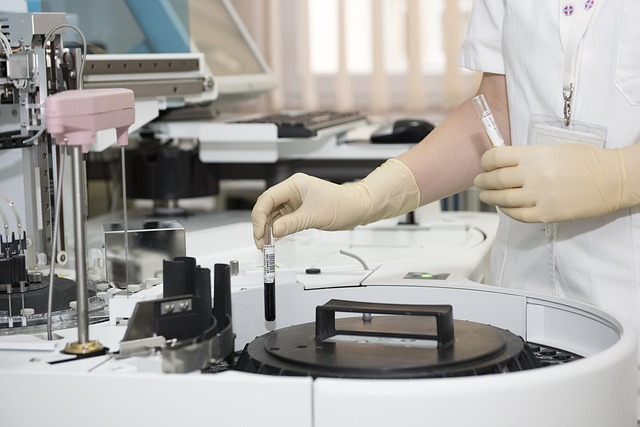High-Speed Centrifugation: Enhancing Precision and Efficiency in Clinical Laboratories
High-speed centrifugation has become a cornerstone of modern clinical laboratories, enabling rapid and precise separation of biological samples. By harnessing centrifugal force, these machines efficiently isolate components such as blood cells, plasma, and other biomolecules, ensuring accurate test results and faster diagnostic workflows. With advancements in technology, modern centrifuges offer enhanced speed, reliability, and safety features, making them indispensable tools for hospitals and research facilities striving for both efficiency and precision in patient care.

How Does Centrifugation Work in Clinical Settings?
Centrifugation is a separation technique that utilizes centrifugal force to separate components of a mixture based on their density. In clinical laboratories, this process is essential for preparing samples for analysis. When a sample is placed in a centrifuge, the rotor spins at high speeds, creating a force many times greater than gravity. This force causes denser particles to move away from the axis of rotation, while lighter components remain closer to the center. The result is a rapid and efficient separation of blood components, cellular debris, or other biological materials.
What Are the Key Features of Modern Centrifuge Machines?
Modern centrifuge machines have evolved significantly, incorporating advanced features that enhance their performance and usability in clinical settings. Some key innovations include:
-
Microprocessor control systems for precise speed and temperature regulation
-
Touchscreen interfaces for easy programming and monitoring
-
Automatic rotor recognition to prevent misuse and ensure safety
-
Noise reduction technology for quieter operation
-
Self-diagnostic capabilities for maintenance and troubleshooting
-
Integrated cooling systems for temperature-sensitive samples
These features not only improve the accuracy and reliability of centrifugation processes but also increase laboratory efficiency by reducing manual intervention and minimizing errors.
How Do High-Speed Centrifuges Improve Laboratory Efficiency?
High-speed centrifuges have significantly improved laboratory efficiency in several ways:
-
Reduced processing time: Higher speeds allow for faster separation of sample components, enabling quicker turnaround times for test results.
-
Increased sample capacity: Modern centrifuges can accommodate multiple samples simultaneously, maximizing throughput.
-
Enhanced separation quality: Higher centrifugal forces achieve more precise separation, particularly for small particles or molecules.
-
Versatility: Many high-speed centrifuges offer interchangeable rotors, allowing laboratories to process various sample types with a single instrument.
-
Improved safety features: Advanced safety mechanisms protect both operators and samples, reducing the risk of accidents and contamination.
By incorporating these efficiency-enhancing features, high-speed centrifuges have become essential tools in busy clinical laboratories, contributing to faster and more accurate diagnoses.
What Are the Applications of High-Speed Centrifugation in Healthcare?
High-speed centrifugation finds applications across various areas of healthcare and clinical research:
-
Blood fractionation: Separating blood components for transfusions, diagnostics, or research purposes.
-
Urine analysis: Concentrating and separating cellular components in urine samples for better detection of infections or abnormalities.
-
Molecular biology: Isolating DNA, RNA, or proteins for genetic testing and research.
-
Virus isolation: Concentrating viral particles from clinical samples for diagnostic purposes or vaccine development.
-
Drug metabolism studies: Separating metabolites in pharmacokinetic research.
-
Cell culture: Harvesting and washing cells for tissue culture experiments.
These applications demonstrate the versatility and importance of high-speed centrifugation in modern healthcare and biomedical research.
How Do Clinical Laboratories Choose the Right Centrifuge?
Selecting the appropriate centrifuge for a clinical laboratory depends on several factors:
-
Sample types and volumes
-
Required speed and g-force
-
Temperature control needs
-
Available laboratory space
-
Budget constraints
-
Specific application requirements
Laboratory managers must carefully consider these factors to ensure they invest in a centrifuge that meets their current needs and can adapt to future requirements.
| Centrifuge Type | Speed Range (RPM) | Max RCF (x g) | Temperature Control | Typical Applications |
|---|---|---|---|---|
| Benchtop | 100 - 15,000 | Up to 21,000 | Optional | General purpose, blood fractionation |
| Microcentrifuge | 100 - 30,000 | Up to 65,000 | Optional | DNA/RNA extraction, PCR preparation |
| Ultracentrifuge | 3,000 - 150,000 | Up to 1,000,000 | Required | Virus isolation, protein purification |
| Floor Model | 100 - 25,000 | Up to 81,000 | Optional | High-volume blood processing, cell harvesting |
Prices, rates, or cost estimates mentioned in this article are based on the latest available information but may change over time. Independent research is advised before making financial decisions.
In conclusion, high-speed centrifugation has become an indispensable tool in clinical laboratories, significantly enhancing precision and efficiency in various healthcare applications. As technology continues to advance, we can expect further innovations in centrifuge design and capabilities, leading to even more accurate and rapid diagnostic processes in the future.
This article is for informational purposes only and should not be considered medical advice. Please consult a qualified healthcare professional for personalized guidance and treatment.




